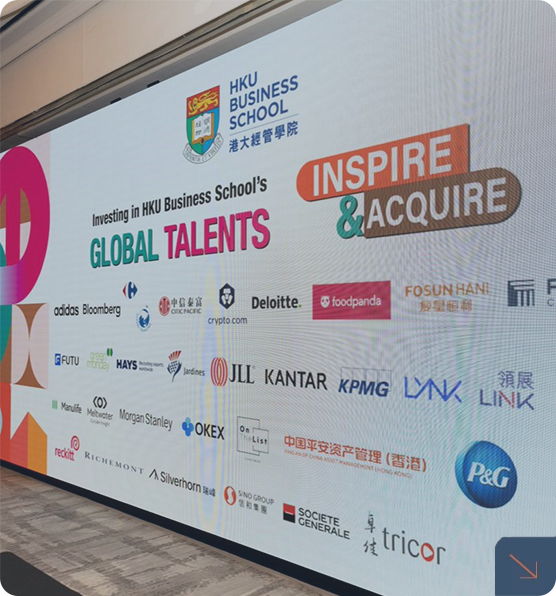
The Flying Geese Paradigm 2.0 in the Era of Deglobalization
Professor Heiwai Tang, Ms Shuyi Long, and Beining Liu
19 February 2025
The “Flying Geese Paradigm” was first proposed by Japanese economist Kaname Akamatsu in the 1930s to describe the transition of labour-intensive manufacturing in Southeast countries towards industries that are more capital- and technology-intensive. The concept reveals that Japan, as the “lead goose”, led the way in completing industrialization, driving the development of other countries through foreign direct investment. This created an interdependent and gradient-advancing system of division of labour in the East Asian economy, characterized by a structure similar to a formation of flying geese. The theory has been validated through economic practice in the decades after the Second World War. Japanese corporations, through their global expansion strategy, not only shaped the manufacturing landscape of East Asia but also set an example for the eventual globalization of enterprises in China, South Korea, and beyond.
Nowadays, more and more countries have come to realize the importance of industrial policy and government intervention. Fierce competition has kept nations vigilant against one another in the fields of business and technology. Apparently, the pivotal theory is no longer compatible with the current economic realities. As the world economy is once again at the crossroads of change: automation, artificial intelligence, geopolitical conflicts, and supply chain reorganization are redrawing the map of global manufacturing. Is the Flying Geese Paradigm, once the theory governing relocation of industries, still applicable? How useful is it as a reference for understanding China’s economic transformation today and its economic interactions with other countries?
In 1985, to address the interest rate hike and continued appreciation of the greenback, the US convened the Group of Five (the US, Japan, the UK, France, and West Germany) at the Plaza Hotel in New York to sign the Plaza Accord. This far-reaching agreement sought to achieve an orderly devaluation of the US dollar against the world’s major currencies. Japan was subjected to the greatest impact, with the Japanese yen appreciating by over 100% within two years. The price competitiveness of Japanese products declined as a result, dealing a serious blow to Japanese exports, particularly in the automobile and electronics industries.
In response to the impact of exchange rates and surging domestic costs, Japanese corporations embarked on an unprecedented wave of overseas production relocation: leading companies in automobile, electronics, and home appliances industries moved their production bases to other places in the region, primarily South Korea, Taiwan, Hong Kong, and Singapore, which are subsequently known as the “Four Asian Little Dragons”. This strategy not only aimed to mitigate exchange rate fluctuations but was also based on the logic of the Flying Geese Paradigm. After completing its industrial upgrading on home soil, these enterprises shifted low value-added manufacturing segments to lower-cost regions. Meanwhile, the latecomer economies were able to gradually advance their own industrialization process by hosting the Japanese enterprises. By the early 1990s, with the economic rise of the Four Little Dragons, the Japanese manufacturing industry further expanded towards Southeast Asia. Thanks to their proximity with supportive policies, Thailand, Malaysia, and Indonesia became new destinations for this expansion.
Take Toyota’s marketing strategy for North America, for example. The company integrated into the US industrial chain by establishing a production base and investing in local research and development (R&D). First launched in the US in the 1980s, the Toyota Camry saloon was not only popular in the North American market but was also the company’s first flagship model for the international market. Toyota surpassed Ford and GM in the early 2000s and 2008 respectively to become the world’s best-selling vehicle manufacturer. This goes to show the high returns from focus on brand-building strategy.
While Japanese enterprises gained new development opportunities through globalization, the Japanese economy paid a heavy price in the process. As a result of the massive relocation of production lines overseas, Japan’s manufacturing industry was gradually hollowing out. Given limited employment prospects, stagnant investment in manufacturing, and a prolonged depression in gross domestic product growth, the Japanese economy entered the “Lost Decade”. Japanese companies responded by reflecting on the sustainability of their cost-driven globalization strategy. With the advent of the 21st century, the globalization strategy of Japanese enterprises began to change alongside the shifting global economic landscape. Particular attention was focused on brand building and technology acquisition, as evidenced by large-scale overseas mergers and acquisitions as well as R&D input.
Plagued by continued external suppression from the US and sluggish domestic market growth in recent years, Mainland Chinese companies find themselves at the crossroads of change, similar to the situation encountered by Japanese corporations four decades ago. However, with the world economy having undergone earth-shattering changes in the intervening years, is the Flying Geese theory still applicable today? Can Mainland companies likewise become the “lead goose” and create a breakthrough window for Asian countries?
It is noteworthy that the Flying Geese model in the 1980s arose from a truly unique historical period. The “gradient advancement” described by this theory was, first and foremost, dependent on international cooperation during the heyday of globalization over the past few decades. Not only did developed and emerging markets need to collaborate with each other, but they also had to set aside competition and animosity. Amid the escalating momentum of deglobalization in the current climate, protectionism and unstable geopolitics are likely to set a thorny path for industrial and technological transfer.
In the wake of the 2010s, faced with the pressures of protectionism, Japan, once the “lead goose”, initiated structural adjustments to its globalization strategy, sparking trends of industrial-chain reshoring and relocalization among major Japanese corporations. In 2022, Sony announced its partnership with Taiwan Semiconductor Manufacturing Company Limited (TSMC) to build a chip manufacturing plant in Kyushu. Instead of allocating resources to the next development stage as originally planned, developed countries started to promote industrial-chain reshoring or near-shoring in order to manage the risk resilience of their industrial-chains. Meanwhile, developing countries in dire need of foreign direct investment and technology transfer are left with dwindling economic development opportunities.
The large-scale application of technological advancements and automated production is another reason why the Flying Geese Paradigm is challenged. Automated production, which can drastically reduce the cost of labour-intensive products, eliminates a key element of this theory: the incentive for companies to shift production chains to lower-cost regions when robots can replace cheap labour. A study by the World Bank finds that once the number of industrial robots in a country exceeds a certain threshold, there is a negative correlation with foreign direct investment in that country. In other words, the more well-developed automated production is in a country, the lower its motivation to invest in industrial transfer to other countries.
Although the China-US rivalry has posed multiple hurdles to international trade, it has also injected fresh vitality into the long-static global economic landscape. America’s attempt to control the rise of China through various policies has prompted businesses to adopt the “China + 1” strategy. Designed to diversify geopolitical risks by balancing a foothold in the Chinese market and maintaining a production base there while seeking suppliers in nearby countries, this strategy has enabled more and more small to medium economies to participate in global supply chains. The main beneficiaries include the Association of Southeast Asian Nations (ASEAN) members such as Vietnam, Thailand, and Indonesia, as well as Central and South American countries such as Mexico and Brazil. For instance, in the ASEAN region, China’s direct investment exceeded US$25 billion in 2023, representing a 34.7% year-on-year increase. The diversification of supply chains, which have long been dominated by a few major trading countries, is conducive to the establishment of diverse international rules and systems.
Growth impetus for emerging markets from overseas expansion of Chinese companies
The global outreach of Chinese companies has also introduced a new business model for developing countries. The latest study by Harvard Business School Professor Josh Lerner et al. (see Note) reveals that with the growth of Chinese enterprises in the past 20 years, their business model has gradually exerted a positive influence on emerging markets. Chinese venture capitalists not only play an increasingly significant role in global investment but have also considerably expanded their investments in emerging markets. In addition, since these investments are typically channelled into sectors dominated by Chinese companies, including educational technology, digital technology, and financial technology, these sectors in emerging markets worldwide experience notably faster development compared to other sectors.
More importantly, in sectors dominated by Chinese enterprises, local investors in emerging markets have also begun to adopt these companies’ investment and business models in making investments. This shift has strengthened their commitment to entrepreneurship and innovation. The study by Lerner et al. concludes that China’s outward investments have a clearly positive impact on the economic and social development of developing countries.
In comparison with the period when Japanese corporations relocated production abroad to peripheral countries, the changes in funding and business models brought to emerging markets by Chinese enterprises and investors represent a modern interpretation of the Flying Geese theory. Despite the changing times, international cooperation is still a core element of economic growth. The global economy is also bound to progress further towards diversification and technology. Countries, both large and small, along with businesses across various sectors, will have greater opportunities to join supply chains worldwide.
Diversification, nevertheless, cannot be taken for granted but requires concerted efforts by all nations to achieve. The Donald Trump administration’s high-tariff policy against US trading partners and even American allies in recent months is likely to trigger a global trade war. Once the global economy is embroiled in the trade war, the cost of multilateral trade will become even higher. To safeguard their own interests, different countries may be inclined to cut outward investments and cooperation. In the long run, this will only undermine their confidence in multinational cooperation, making development even harder for low- to middle-income countries.
Note: Josh Lerner, Junxi Liu, Jacob Moscona, and David Y. Yang. 2024. “Appropriate Entrepreneurship? The Rise of China and the Developing World”, Havard University Working Paper.







